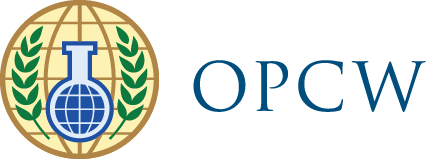THE HAGUE, Netherlands—11 June 2024—The Organisation for the Prohibition of Chemical Weapons (OPCW) Fact-Finding Mission (FFM) in Syria concluded that the information obtained and analysed is not sufficient to provide reasonable grounds to determine that toxic chemicals were used as a weapon in the reported incidents that occurred on 9 August 2017 in Qalib al-Thawr and 8 November 2017 al-Balil, Hama Governorate, the Syrian Arab Republic.
Incidents Reported by the Syrian Arab Republic
-
On 21 September 2017, the Government of the Syrian Arab Republic informed the OPCW Technical Secretariat about an incident that occurred near the village of Qalib al-Thawr in the eastern countryside of al-Salamiyah in the Hama Governorate on 9 August 2017. The Syrian Arab Republic reported that the Islamic State in Iraq and the Levant (ISIL), launched AGS-type munitions containing unknown toxic gases, causing several Syrian Arab Army (SAA) soldiers to exhibit symptoms including suffocation, fainting, and vomiting.
- On 24 November 2017, the Syrian Arab Republic reported to the Secretariat an attack with mortars containing “poisonous” gases targeting the SAA in al-Balil, which is in the surroundings of Souran in the Governorate of Hama, on 8 November 2017.
OPCW Fact-Finding Mission Conclusions
The FFM obtained information regarding the two reported incidents from diverse sources, including interviews with witnesses, visit to locations of interest relevant to the incidents, medical records, and documents and correspondence exchanged with the Syrian Arab Republic.
The FFM pursued further information from all available sources. In doing so, it faced challenges in corroborating the information gathered regarding the reported incidents. Furthermore, given several identified gaps, such as contradictions in reports and lack of accurate information, the FFM cannot provide a toxicological assessment of the reported exposure.
The information obtained and analysed as a whole is not sufficient to provide reasonable grounds for the FFM to determine that toxic chemicals were used as a weapon in the reported incidents that occurred on 9 August 2017 in Qalib al-Thawr and on 8 November 2017 al-Balil, Hama Governorate, the Syrian Arab Republic.
The FFM report was shared with all States Parties to the Chemical Weapons Convention and is to be transmitted, per standard practice, to the United Nations Security Council through the UN Secretary-General.
Background
With repeated allegations of the use of toxic chemicals for hostile purposes at a number of locations in the Syrian Arab Republic, on 29 April 2014, the OPCW Director-General announced the formation of the OPCW Fact Finding Mission (FFM). The establishment of the FFM was based on the general authority of the OPCW Director-General to seek to uphold at all times the object and purpose of the Chemical Weapons Convention. This authority is reinforced by the relevant decisions of the OPCW Executive Council and the United Nations Security Council resolution (UNSCR) 2118 (2013); and its acceptance by the Syrian Arab Republic. Its creation is also based on terms of reference agreed between the Secretariat and the Syrian National Authority.
The FFM is responsible for determining whether toxic chemicals have been used as weapons in the Syrian Arab Republic. On the basis of the FFM’s findings, the OPCW Investigation and Identification Team (IIT) (as the OPCW-UN Joint Investigative Mechanism (JIM) did previously), collects and analyses evidence that may help to identify the perpetrators of chemical weapons attacks in Syria.
To date, the FFM has issued 22 reports covering 74 instances of alleged chemical weapons use. The FFM concluded that chemical weapons were used or likely used in 20 instances: in 14 cases the chemical used was chlorine, in three cases the chemical used was Sarin, and in three cases the chemical used was mustard agent. These reports were submitted to the States Parties of the Chemical Weapons Convention and the UN Security Council. All FFM reports are published on the OPCW website.
As the implementing body for the Chemical Weapons Convention, the OPCW, with its 193 Member States, oversees the global endeavour to permanently eliminate chemical weapons. Since the Convention’s entry into force in 1997, it is the most successful disarmament treaty eliminating an entire class of weapons of mass destruction.
In 2023, the OPCW verified that all chemical weapons stockpiles declared by the 193 States Parties to the Chemical Weapons Convention since 1997 — totalling 72,304 metric tonnes of chemical agents — have been irreversibly destroyed under the OPCW’s strict verification regime.
For its extensive efforts in eliminating chemical weapons, the OPCW received the 2013 Nobel Peace Prize.
More Information
- Note by the Technical Secretariat: Report of the OPCW Fact-Finding Mission in Syria regarding Incidents of Alleged Use of Toxic Chemicals as a Weapon in Qalib al-Thawr, al-Salamiyah, on 9 August 2017, and al-Balil, Souran, on 8 November 2017, in Hama Governorate, the Syrian Arab Republic
- Syria and the OPCW | OPCW
- Fact-Finding Mission | OPCW
- Investigation and Identification Team (IIT) | OPCW
